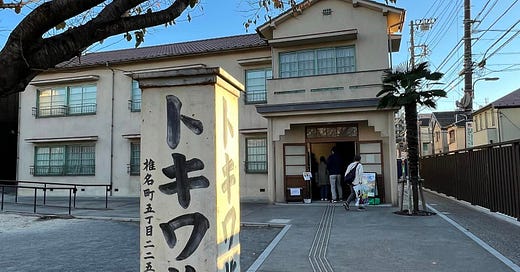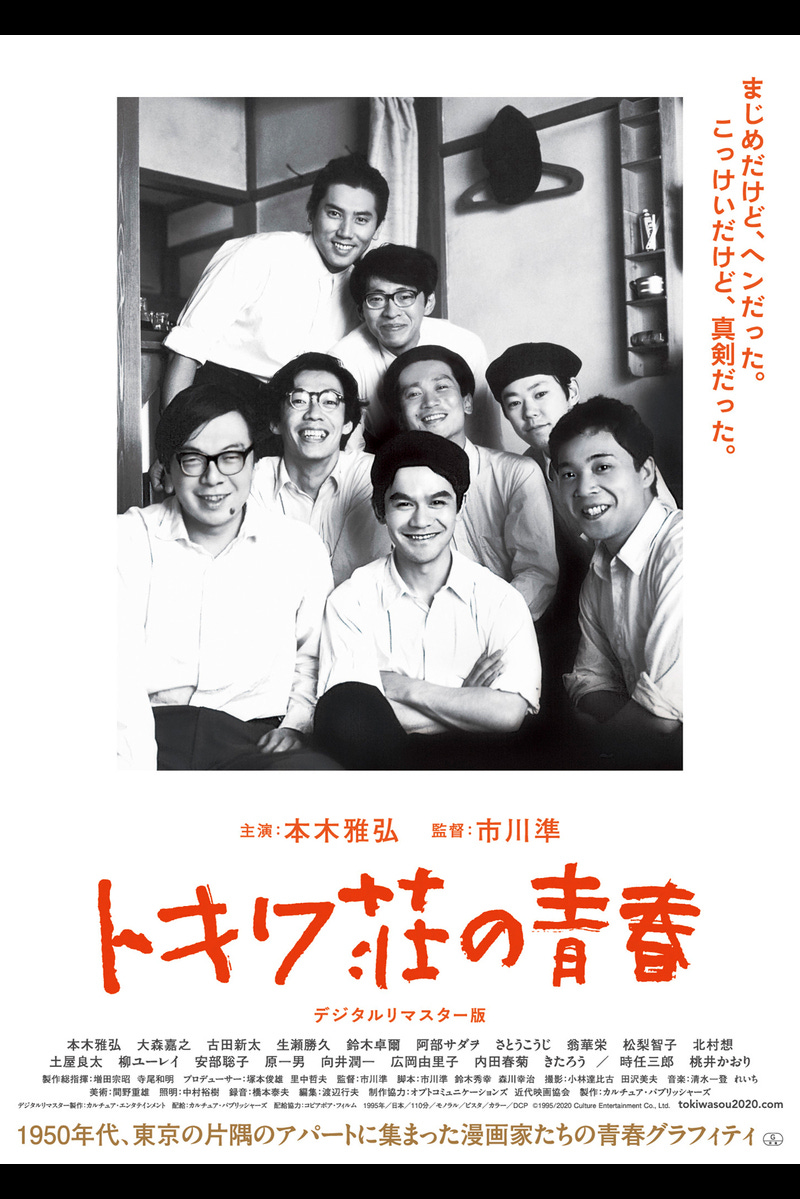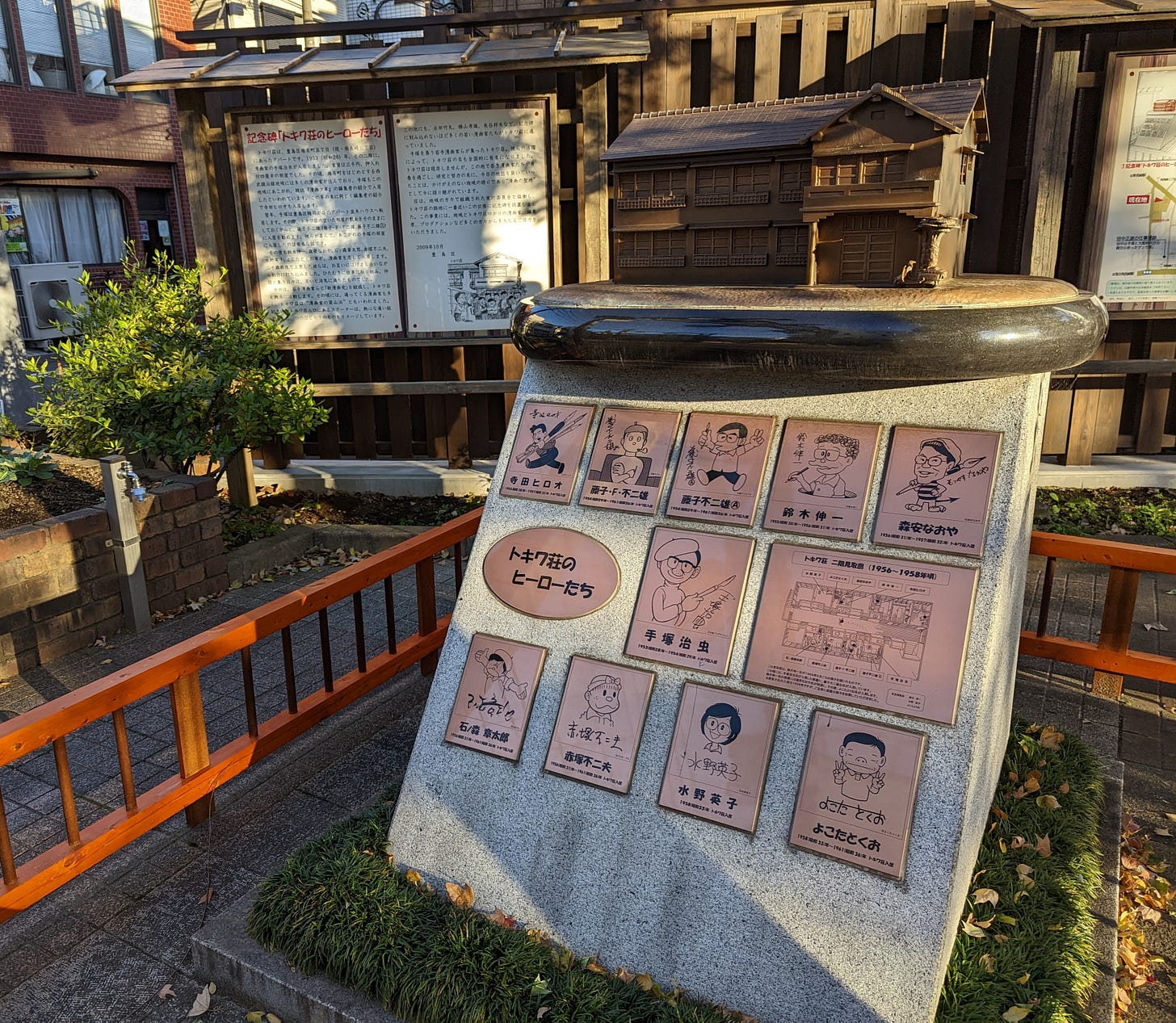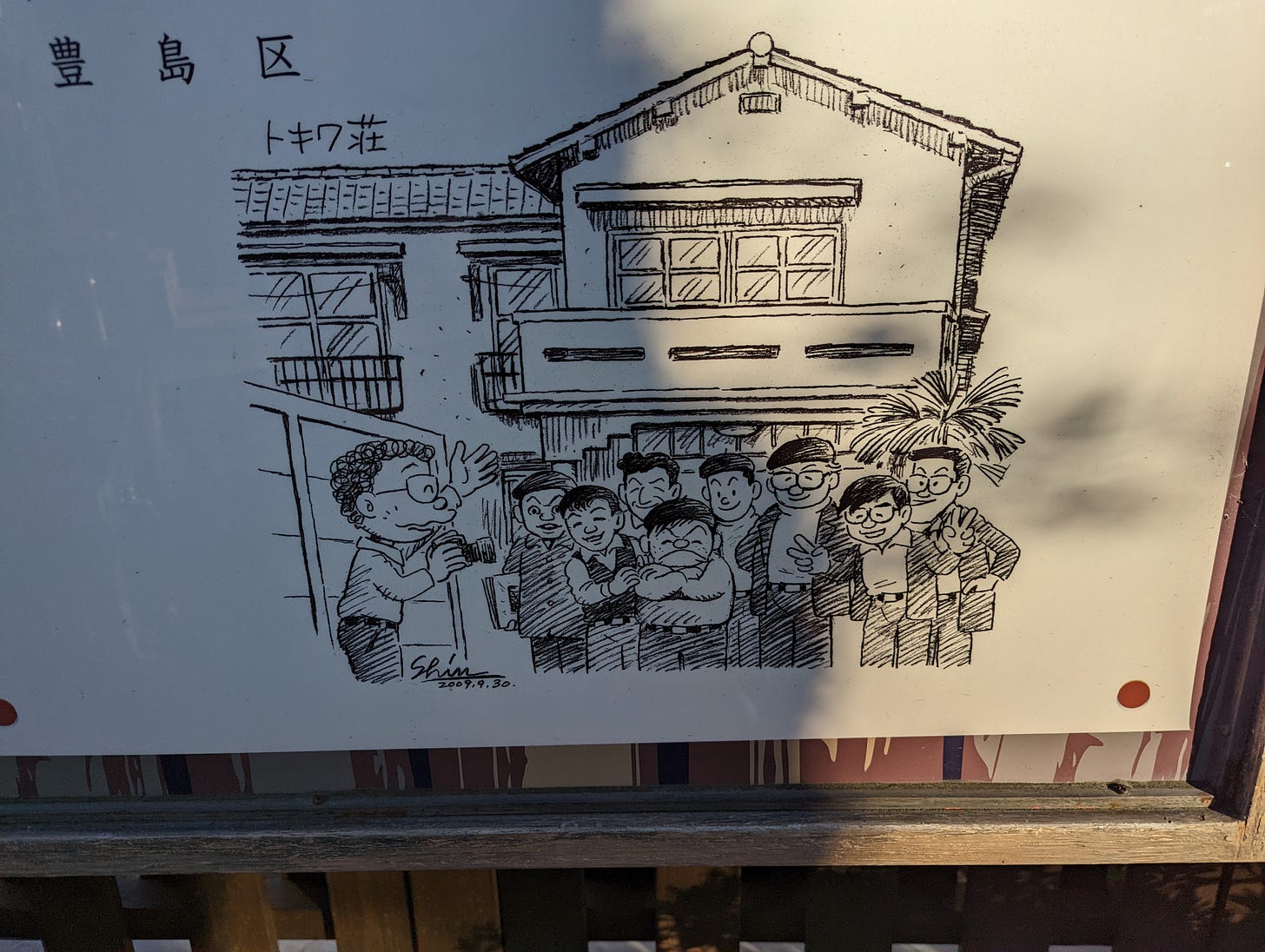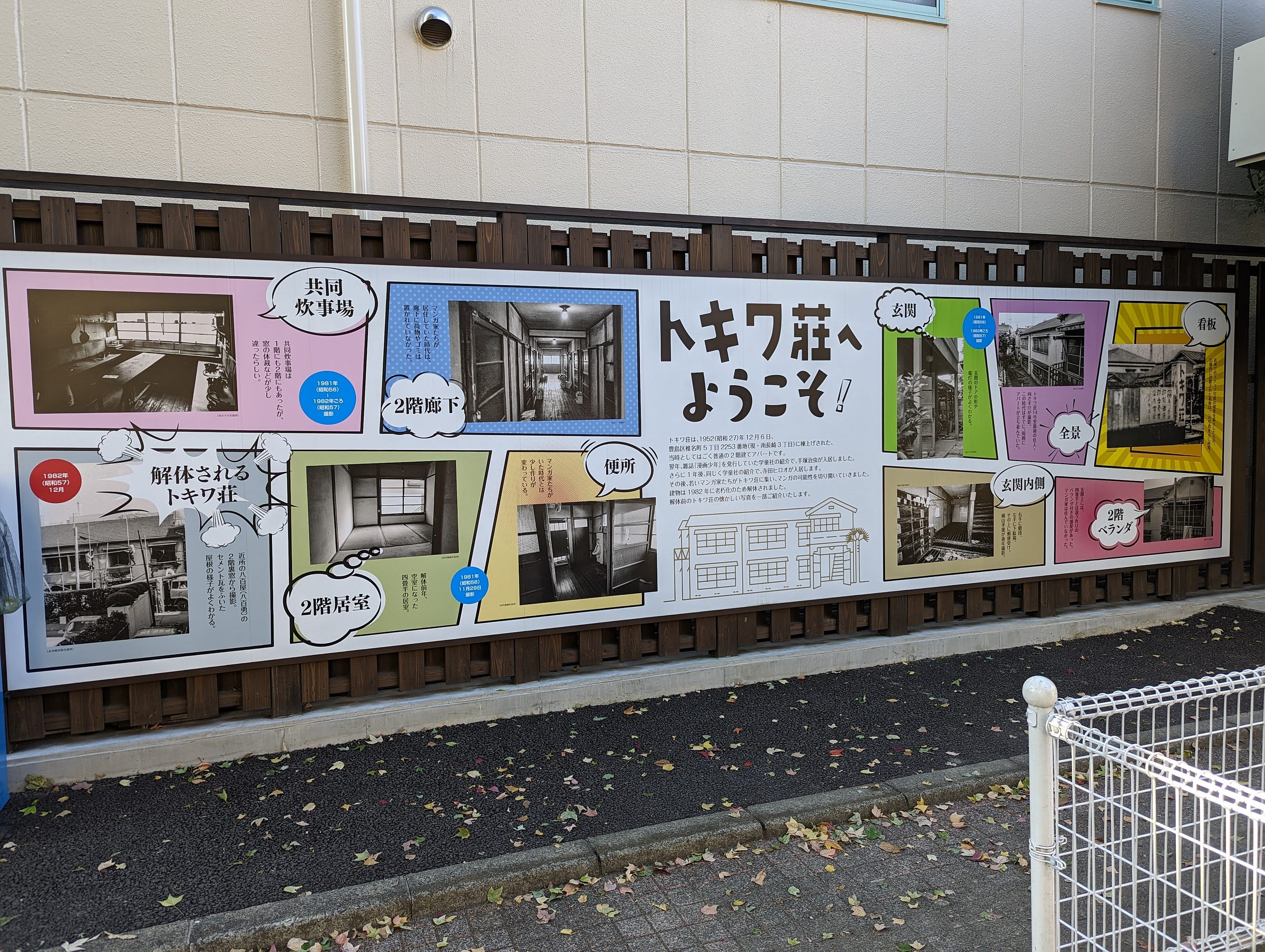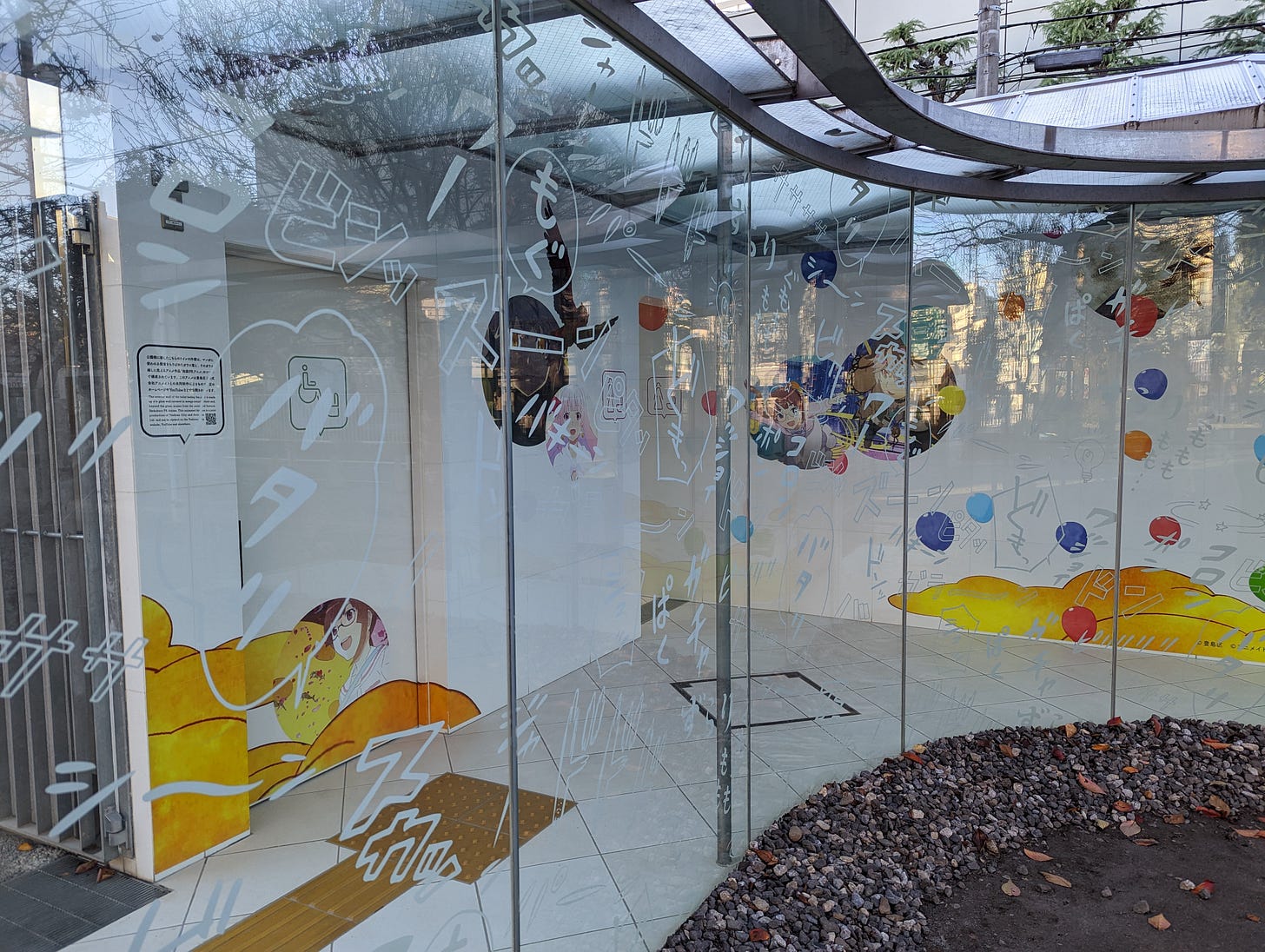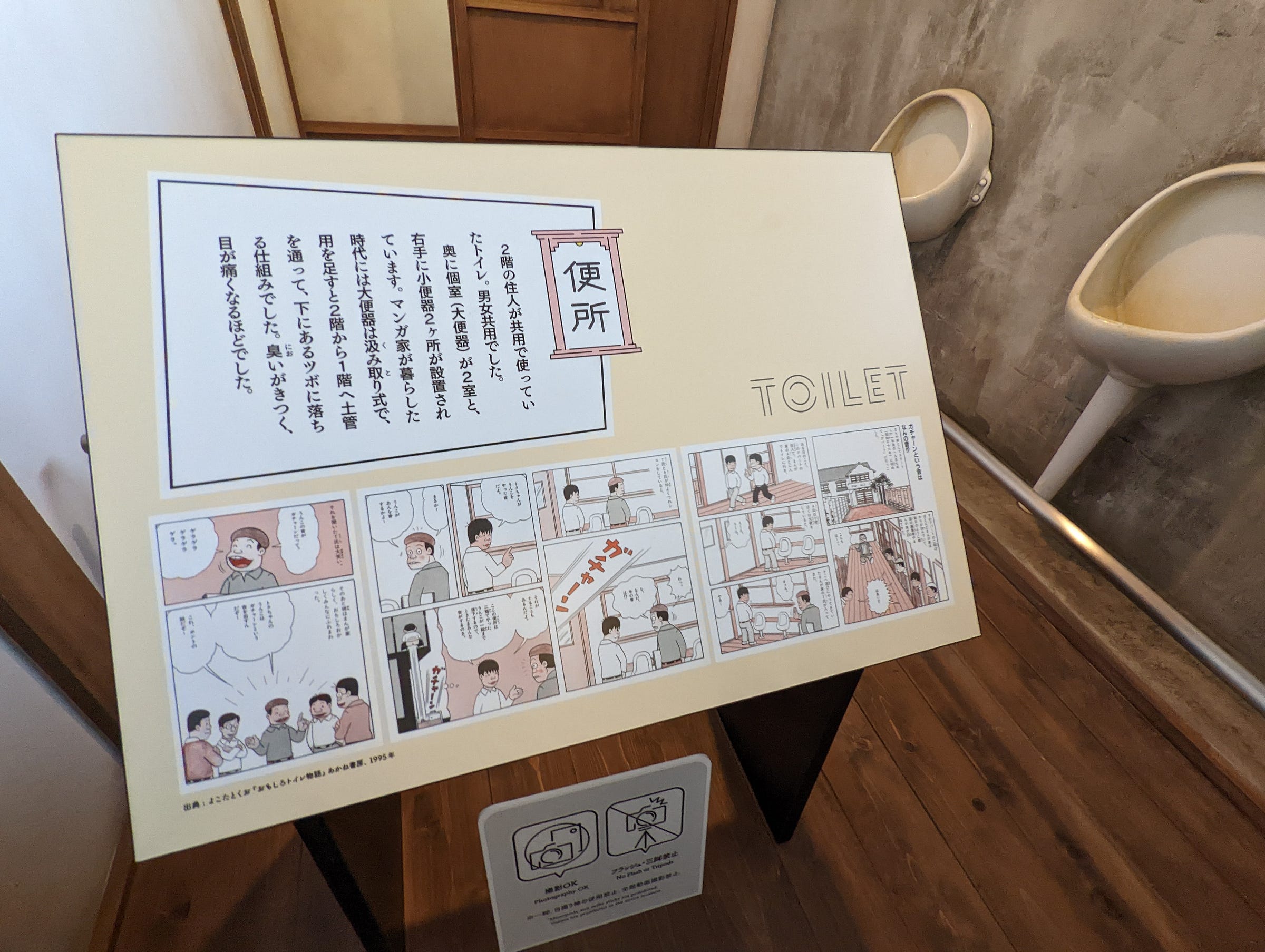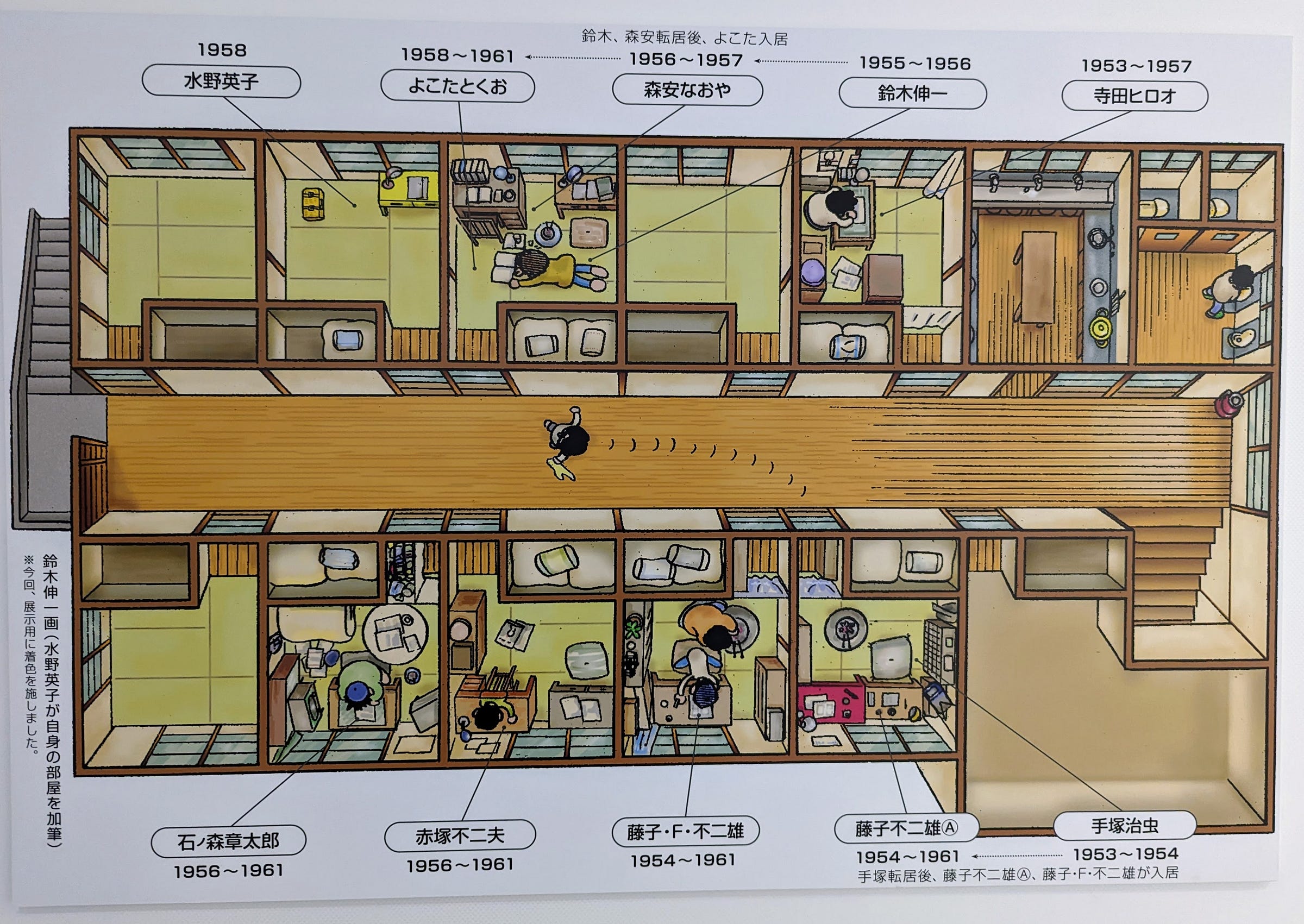CULTURE: A Visit to Tokiwa-so Manga Museum
Deb and Christopher journey to the most famous rooming house where manga legends lived
Hi y’all! Christopher here, and as you may know from following Deb on Twitter or Facebook, both she and I spent some time hanging out together in Tokyo this month, and we did a LOT of cool stuff related to manga. We wanted to write up our experiences in a bigger way, and so we’re sharing them here the Mangasplaining Extra Substack for paid subscribers. We hope to keep doing this sort of thing, but please also think of it as a THANK YOU while we wait for the contracts on our next round of manga serializations (you’re going to LOVE them). Also, this is a bit long, you might want to view it on the website or in the app.
A Visit To Tokiwa-so
By Deb Aoki and Christopher Woodrow-Butcher
Tokiwa-so is the name of a legendary Showa-era rooming house located a few kilometers northwest of Ikebukuro in Tokyo. It became famous largely because it was the rooming house where many of the medium’s most famous manga-ka lived together at the start of their careers in the 1950’s through 1970’s, including Osamu Tezuka (creator of Astro Boy), Shotaro Ishinomori (creator of Kamen Rider) and Fujiko F. Fujio and Fujio Fujiko A (the co-creators of Doraemon) and many others. This was when these creators were young men (and a young woman, Hideko Mizuno) just starting out as manga creators, and long before they were household names. They ate, drank, went out to see movies, collaborated on comics, often being sounding boards and assistants for each others’ work. They formed friendships that lasted long after they moved out of the house, and many drew fond remembrances of their days there in manga form.
But it wasn’t until we tackled the ‘classic’ manga Kamen Rider on Episode 47 that we went really in-depth on Tokiwa-so and Mangasplained it to you all. Here’s how Deb described it at the time, via its connection to Kamen Rider creator Shintaro Ishinomori.
[Deb:] Shotaro Ishinomori got his start in manga in 1954 while still in high school in Miyagi Prefecture. He moved from his hometown in northern Japan to Tokyo in 1956, to become Tezuka’s assistant on Astro Boy. While living in Tokyo, he moved into famous boarding house Tokiwa-so, in the northwest corner of Tokyo, near Ikebukuro.
This legendary boarding house was home to many creators during the period of 1953-1962, including Fujio Akatsuka (Osomatsu-san) and Fujiko F. Fujio (Doraemon), among others. As young men (and women — creator Hideko Mizuno, creator of rock and roll shojo manga Fire!! also had a stint at Tokiwa-so), these now legendary comics creators would all be working on their manga, and they would help each other out on deadlines. This is said to be the origin of the manga assistant system we have today.
Ishinomori drew many short stories about his memories at Tokiwa-so, including these excerpts from Aoi Man Kakyo (a collection of autobiographical short stories):
In 1996, Jun Ichikawa directed Tokiwaso no Seishun (トキワ荘の青春), an award-winning film that offered a dramatization of what life was like at Tokiwa-so.
While it’s not available in English in DVD or via streaming to viewers outside of Japan, a new remastered version of the film was released recently there. This clip from The Ropponica Project offers a glimpse into the film with some English subtitles.
The original Tokiwa-so building was demolished in 1982 but was recently recreated as a museum and opened in March 2020, as the “Toshima City Tokiwa-So Manga Museum: https://tokiwasomm.jp/en/. You can bet that we’ll be visiting there whenever we can get back to Japan…!
You can see a scale model of the original Tokiwa-so in its original state (heh) in the show notes for this episode at https://www.mangasplaining.com/blog/ep-47-kamen-rider-classic-collection-by-shotaro-ishinomori-record-of-ragnarok-v1-2/.
As Deb promised all the way back 40 episodes ago, we DID visit the museum as soon as we could, and so today we’re bringing you a bit of a tour of the facilities. If you want to plan your own visit, check out their homepage at https://tokiwasomm.jp/en/. Enjoy!
[Deb:] This reproduction of the famous rooming house where manga legends Osamu Tezuka (Astro Boy), Shotaro Ishinomori (Kamen Rider), Fujio F Fujiko and Fujio Fujiko A (Doraemon) and Fujio Akatsuka (Tensai Bakabon) lived in the 1950s-70s when they were poor struggling manga artists is the stuff of legends. Many of the former residents of Tokiwa-so drew comics reminiscing about their days there as being formative to their careers.
The Toshima Kuritsu Tokiwaso Manga Museum opened in July 2020, so this was our first chance to see it in person. Reservations to visit are required, but it’s free to book online and there’s an English-language website. They do accept walk-ins on a space-available basis, but if you’re determined to see this place, make a reservation. We arrived a few minutes late, but they weren’t terribly strict about it.
[Christopher:] It’s worth noting that the museum is pretty close to the location of the original Tokiwa-so, but isn’t in exactly the same spot. However, manga nerds and obsessives spent more than 20 years figuring out how to create a replica of the original building, including reproducing the rust, creaky wooden floors and general Showa-era scruffiness of the place, so this is about as close an experience as you could hope to achieve… while still being well-constructed enough to withstand an earthquake or fire, which the original wood building probably was not!
[Christopher:] The museum is situated in a public park, and there are a few signboards, placards, and monuments which explain the importance of the building and the people who resided there. This monument has a replica of the house, as well as plaques dedicated to the manga-ka who lived there. It even has a plaque of the room layout! The manga-ka featured (from top-left) include: Hiroo Tarada, Fujiko F. Fujio, Fujiko Fujio A., Shinichi Suzuki, Naoya Moriyasu, Osamu Tezuka, Shotaro Ishinomori, Fujio Akatatsuka, Hideko Mizuno, and Tokuo Yokota.
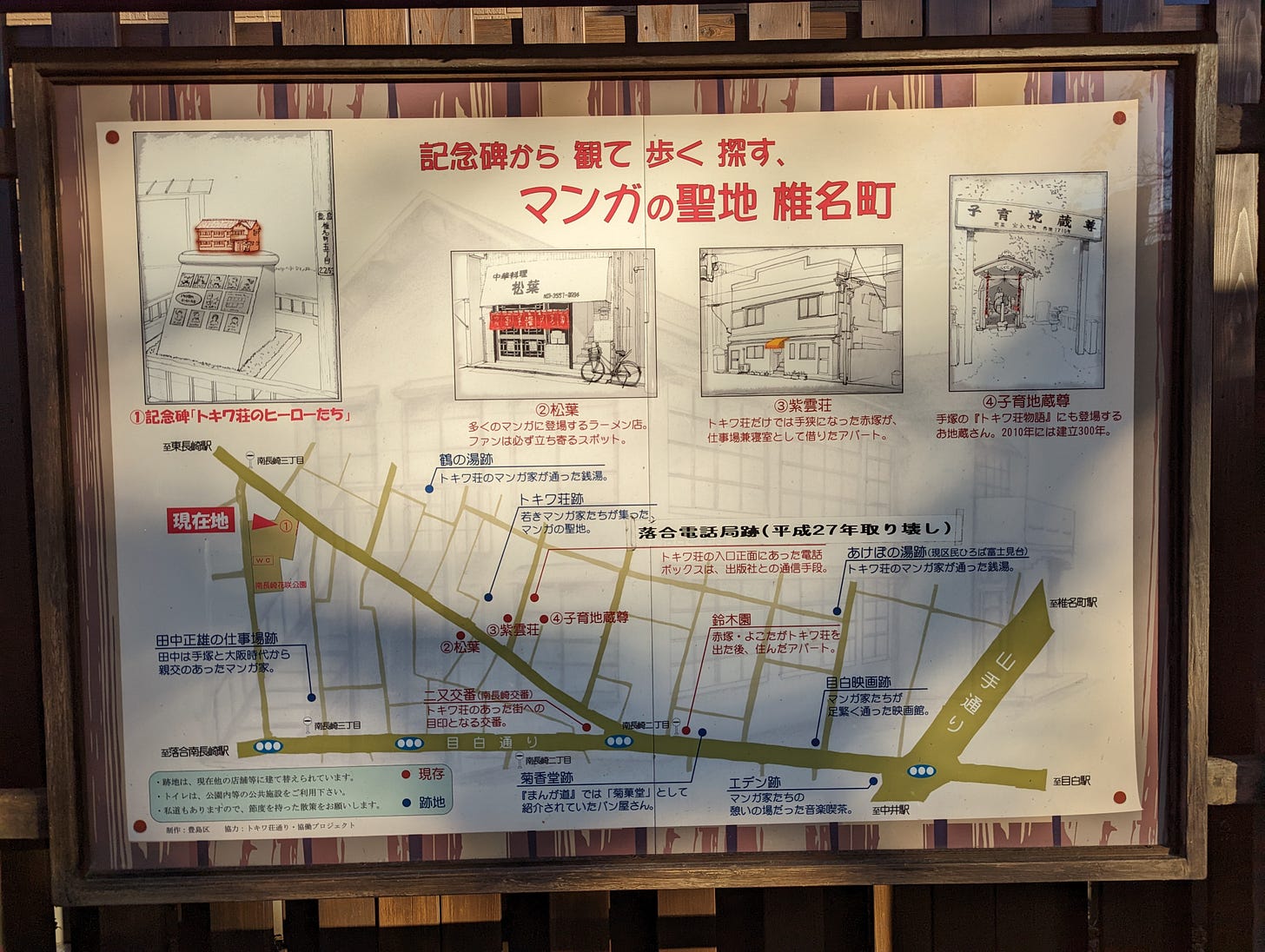
Even the bathroom in the park is manga-themed, with a transparent wall covered in manga sound effects, and scenes from a video promoting Ikebukuro’s connections to manga and anime.
Here’s that video, for reference:
And speaking of bathrooms, after entering the museum, taking off your shoes (a common occurrence in Japanese historical spaces by the way!), and heading up the stairs, you encounter the very first room of Tokiwa-so… the communal toilet!
Lest you think it’s JUST a toilet (and please DO NOT USE IT, it’s not real), there’s even a fun little comic strip about the toilet room that you can read.
At this point, by the way, I should say that most of the signage is exclusively in Japanese, with the occasional bit of light English translation. However, there is an English guide to the museum available at the desk when you check in that you can get, which has more extensive translations. However, none of the comics material is translated, which is a bit of a bummer. Here’s the map of the top floor, btw, so no more surprises...
And here’s where our free subscribers have to leave us for now. Please consider becoming a paid subscriber, or give it a try with a free trial! Paid subscribers, let’s keep going…
Keep reading with a 7-day free trial
Subscribe to MSX - The Mangasplaining Extra Newsletter to keep reading this post and get 7 days of free access to the full post archives.

